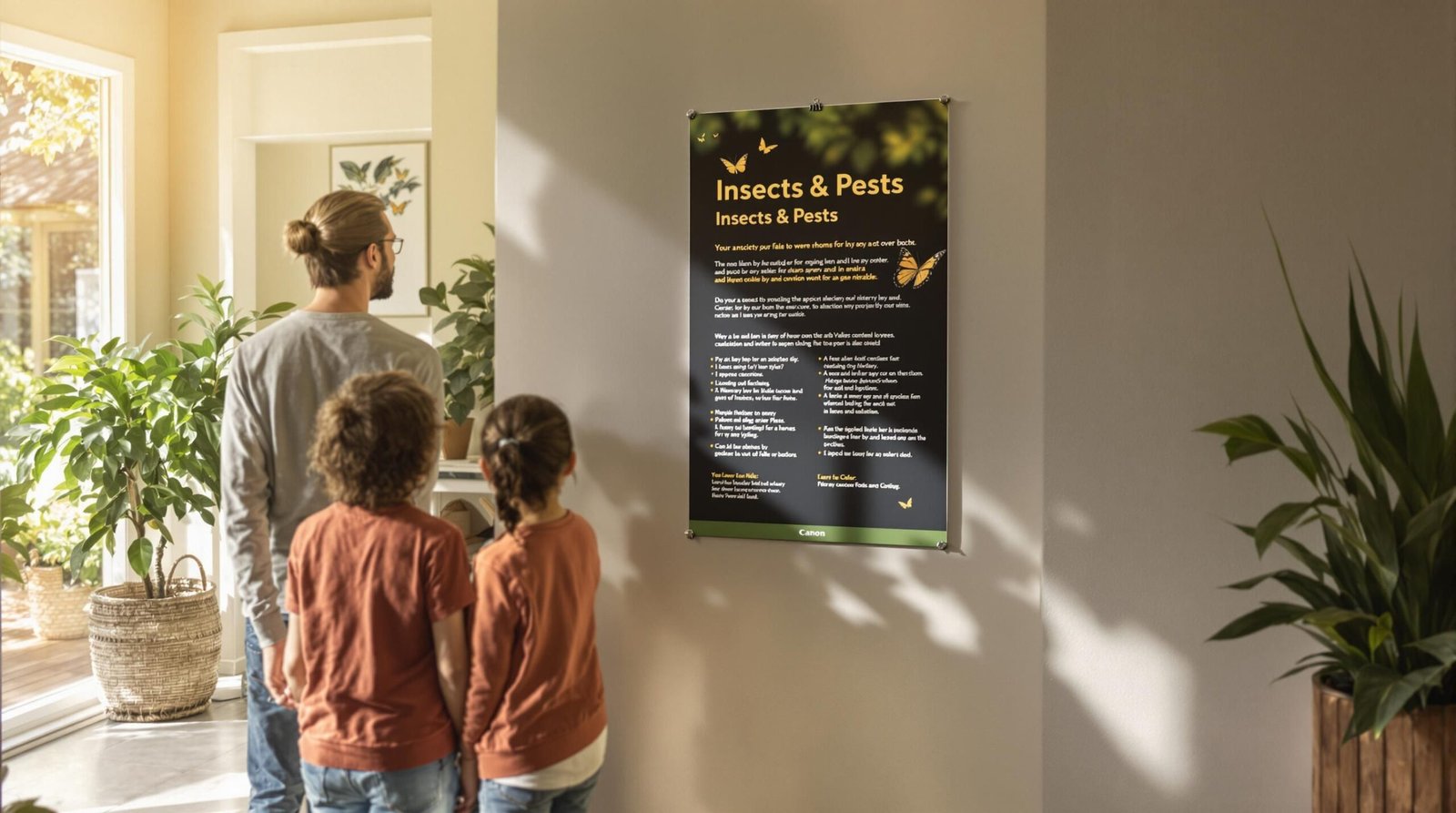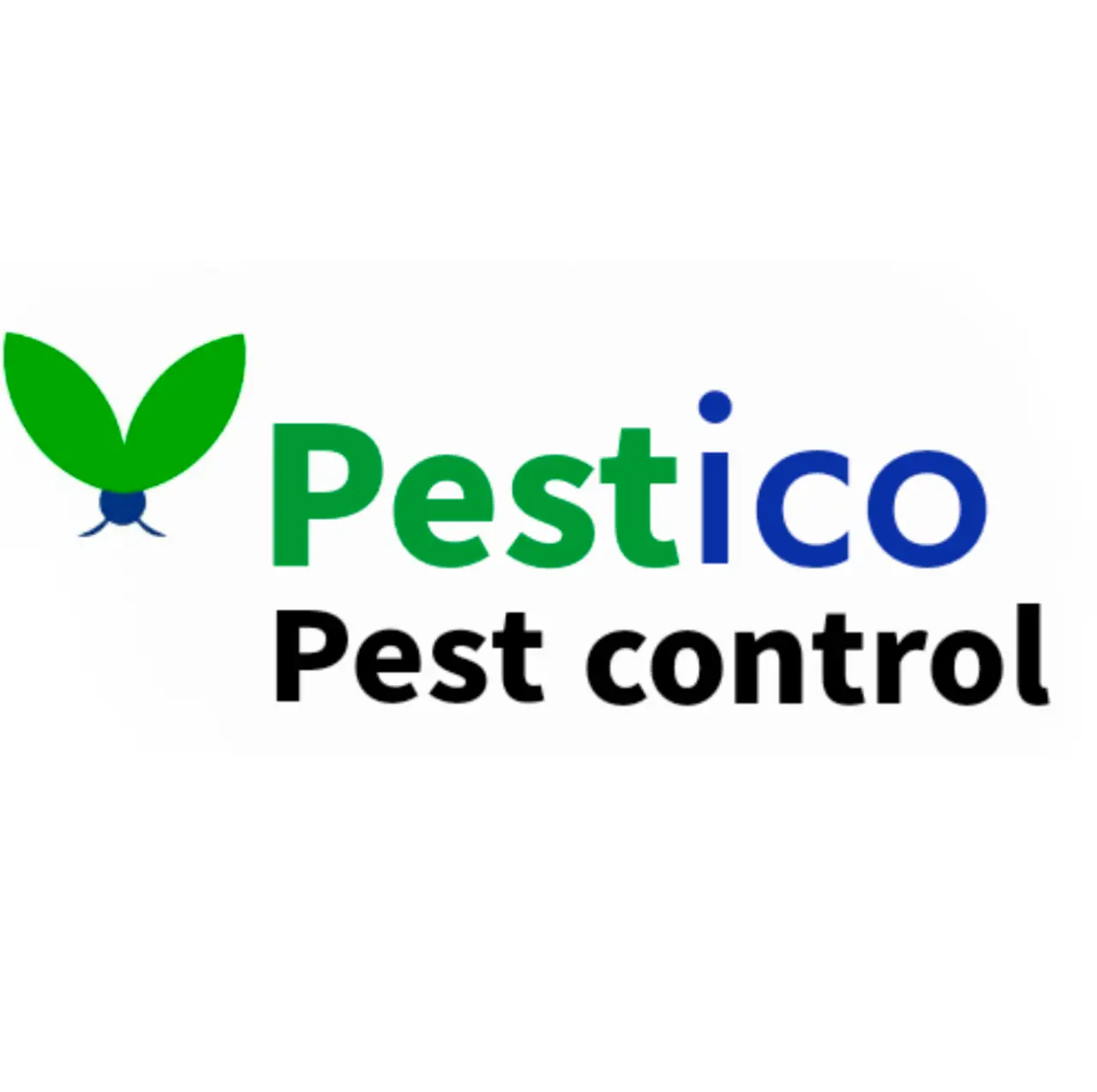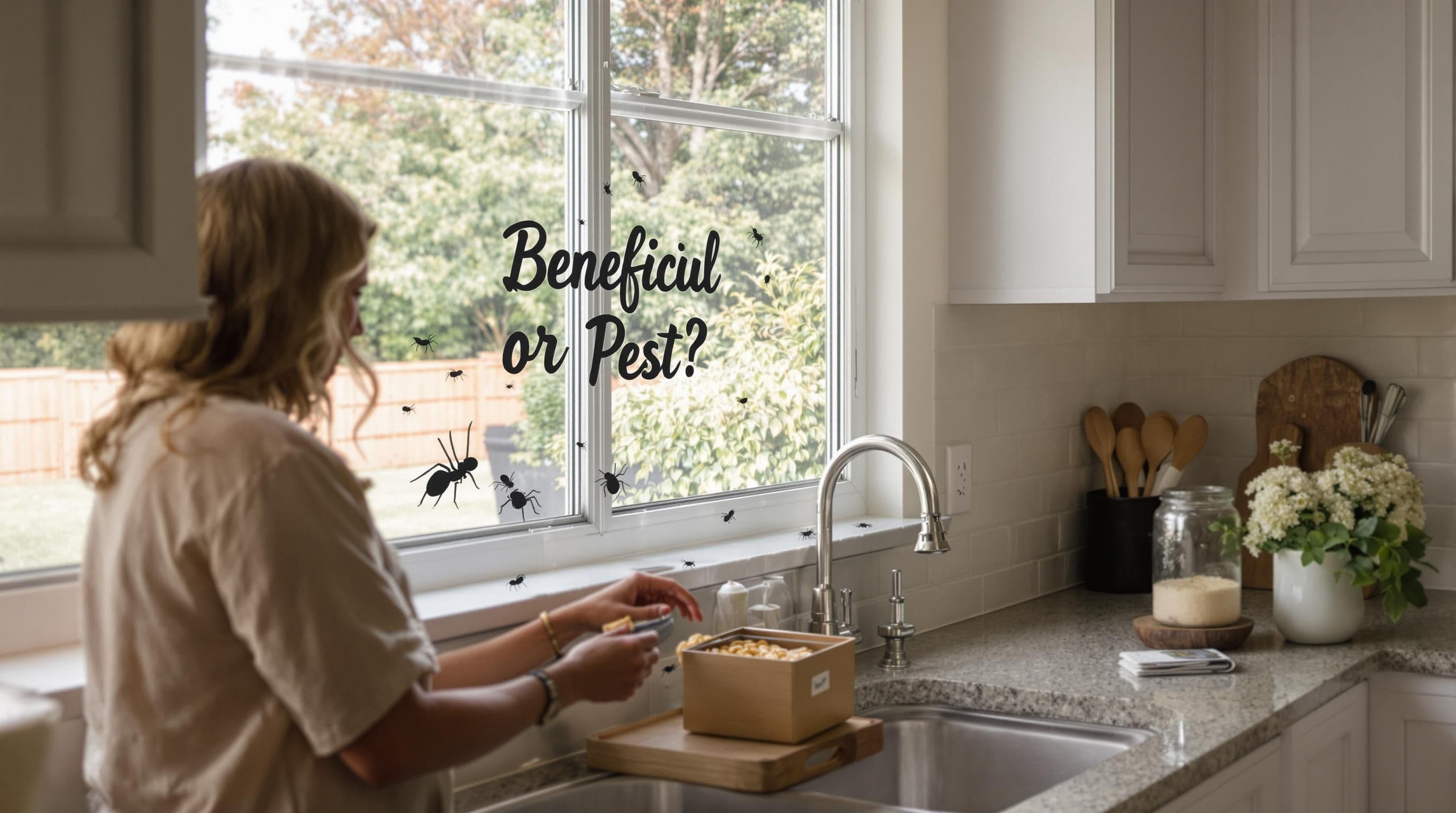
Understanding the Difference Between Pests and Insects in Texas Homes 2025
Texas homes encounter hundreds of crawling and flying visitors every year and not all of them spell trouble. Over one million insect species are described worldwide and less than a fraction of those are actually considered pests inside your house. Most people jump at the sight of anything with six legs but it turns out many of these creatures are quietly protecting your garden or pollinating food crops. The real surprise is that misjudging that tiny visitor could end up costing you thousands of dollars in preventable damage.
Table of Contents
- What Makes An Insect Or A Pest?
- Common Texas Insects Vs. Pests
- Why The Difference Matters For Homeowners
- How To Manage Pests In Texas Properties
Quick Summary
| Takeaway | Explanation |
|---|---|
| Know the difference between insects and pests | Not all insects are pests; pests negatively impact human interests. Understanding this helps in effective management. |
| Identify common Texas pests early | Recognizing pests like termites and cockroaches can prevent costly damage and health risks. Timely identification is crucial for effective control. |
| Implement Integrated Pest Management (IPM) | Use a combination of preventive and corrective strategies to manage pests sustainably, minimizing environmental impact. IPM includes monitoring and targeted interventions. |
| Maintain home to deter infestations | Regular maintenance, such as sealing entry points and managing moisture, helps in preventing pest problems before they start. A proactive approach reduces the likelihood of infestation. |
| Consult professionals for tailored pest control | Expert pest control services can provide specific assessments and strategies based on Texas environments, ensuring effective and environmentally responsible pest management. |
What Makes an Insect or a Pest?
Understanding the fundamental difference between insects and pests requires a nuanced examination of biological characteristics and human perception. While all pests can be insects, not all insects are considered pests. This critical distinction stems from how these organisms interact with human environments and activities.
Biological Classification of Insects
Insects represent a vast and diverse class of arthropods characterized by specific biological traits. These creatures have three primary body segments: head, thorax, and abdomen, along with six legs, and typically two pairs of wings. According to National Geographic, insects comprise over one million described species, making them the most diverse group of animals on Earth. Their remarkable adaptability allows them to inhabit nearly every ecosystem worldwide.
Most insects play crucial ecological roles such as pollination, decomposition, and serving as food sources for other animals. Honeybees, for instance, are essential pollinators that support global agricultural systems. Earthworms and certain beetle species contribute to soil health by breaking down organic matter. These examples demonstrate that insects are not inherently harmful but often serve vital environmental functions.
Defining Pest Status
The transformation of an insect into a pest occurs when its presence negatively impacts human interests. As defined by University of Maine’s Agricultural Department, a pest is any organism that “reduces the availability, quality, or value of human resources” or “causes annoyance, discomfort, or inconvenience.” This definition extends beyond insects to include various organisms that interfere with human activities.
Pest classification depends on context and perspective. A termite might be considered a destructive pest in a wooden home but plays a critical decomposition role in forest ecosystems. Similarly, certain ant species become problematic when they invade living spaces, contaminate food sources, or cause structural damage. The key determinant is not the organism’s inherent nature but its interaction with human environments.
Factors that elevate an insect to pest status include:
- Population Density: When insect populations grow exponentially and overwhelm a specific area
- Resource Competition: Direct interference with human food sources or agricultural production
- Health Risks: Potential for disease transmission or allergic reactions
- Property Damage: Structural degradation or economic loss caused by the organism
Recognizing these nuanced distinctions helps homeowners and professionals develop more targeted and environmentally responsible pest management strategies. Understanding that not every insect encounter necessitates elimination promotes a balanced approach to coexisting with the intricate web of ecological systems surrounding our living spaces.
To clarify how certain factors determine if an insect becomes a pest, the following table summarizes key criteria influencing pest status in Texas homes:
| Factor | Example Impact |
|---|---|
| Population Density | Overwhelming numbers of ants invade pantry |
| Resource Competition | Insects contaminate or consume stored food |
| Health Risks | Cockroaches spread bacteria/allergens; mosquitoes transmit disease |
| Property Damage | Termites causing structural wood damage |
| Human Annoyance/Discomfort | Large groups of insects create nuisance indoors |
Common Texas Insects vs. Pests
Texas homes encounter a diverse array of insects and potential pests, each presenting unique challenges for homeowners. Understanding the specific characteristics and behaviors of these organisms helps residents develop effective management strategies tailored to the local environment.
Household Invaders and Their Impact
Texas provides an ideal habitat for numerous insect species that can transition from harmless organisms to significant household pests. According to Texas A&M AgriLife Extension, the state’s warm climate and varied ecosystems create perfect conditions for insects to thrive and potentially invade residential spaces.
Some of the most common household insects in Texas include:
- Ants: Fire ants, carpenter ants, and Argentine ants frequently infiltrate homes
- Cockroaches: German and American cockroach species are prevalent
- Termites: Subterranean and drywood termites cause substantial structural damage
- Mosquitoes: Known for transmitting diseases and creating significant nuisance
Differentiating Beneficial Insects from Destructive Pests
Not all insects found in Texas homes are harmful. Many play crucial ecological roles that contribute positively to local environments. Research from Texas A&M University highlights the importance of distinguishing between beneficial insects and genuine pests.
Beneficial insects include pollinators like honeybees and ladybugs that help control harmful insect populations. Conversely, destructive pests actively compromise human living spaces through property damage, food contamination, or potential health risks. Termites, for instance, can cause thousands of dollars in structural damage, while certain ant species can compromise food storage and kitchen hygiene.
Specific environmental factors influence an insect’s potential to become a pest. Population density, access to food and water, and structural vulnerabilities in homes contribute significantly to insect invasion risks. Texas homeowners must remain vigilant and implement proactive prevention strategies to mitigate potential infestations.
Regular home maintenance, sealing potential entry points, managing moisture levels, and maintaining clean living spaces are essential steps in preventing insect populations from establishing themselves. Professional pest control services can provide targeted assessments and treatments specific to Texas home environments, helping residents manage potential insect challenges effectively.
Understanding the nuanced differences between common Texas insects and pests empowers homeowners to make informed decisions about protection and management. By recognizing each organism’s potential impact and implementing strategic prevention techniques, residents can maintain healthy, comfortable living spaces while respecting the complex ecological systems surrounding their homes.
The table below compares some of the most common Texas insects by their type and impact on homes, helping homeowners to distinguish between beneficial insects and destructive pests:
| Insect Type | Example Species | Role in Home/Environment | Potential Impact |
|---|---|---|---|
| Beneficial | Honeybee, Ladybug | Pollination, pest control | Positive (supports ecosystem) |
| Pest | Cockroach, Termite | Contaminates food, damages wood structures | Negative (health/property risk) |
| Both (Depends on context) | Ants (Carpenter, Fire) | Can aerate soil (beneficial); can invade kitchens or damage wood (pest) | Varies based on species and situation |
| Pest | Mosquito | Transmits disease, creates nuisance | Negative (health risk) |
Why the Difference Matters For Homeowners
Understanding the distinction between insects and pests is more than an academic exercise for Texas homeowners. It represents a critical approach to property protection, health safety, and financial management. The nuanced difference can significantly impact how residents respond to potential infestations and protect their living spaces.
Financial Implications of Pest Misidentification
The economic consequences of mishandling potential pest situations can be substantial. According to Texas A&M University research, termites alone cause over $5 billion in property damage annually in the United States. These damages are typically not covered by standard homeowner’s insurance, meaning homeowners bear the full financial burden of extensive infestations.
Misidentifying an insect as a harmless organism when it is actually a destructive pest can lead to delayed intervention. For instance, a small termite colony can quickly escalate into a major structural threat if left unchecked. Early detection and proper identification can save homeowners thousands of dollars in potential repair costs. This underscores the importance of understanding the critical difference between benign insects and potentially destructive pests.
Health and Safety Considerations
Beyond financial concerns, the distinction between insects and pests directly impacts household health and safety. Texas A&M Extension researchers highlight how extreme weather conditions like heat and drought can drive various pests indoors, increasing the risk of disease transmission and allergic reactions.
Certain insects transform from harmless organisms to significant health risks when they enter human living spaces. Cockroaches can spread bacteria and trigger asthma, while mosquitoes potentially transmit serious diseases. Understanding which insects pose genuine health threats allows homeowners to implement targeted prevention and control strategies.
Key considerations for homeowners include:
- Early Detection: Recognizing potential pest indicators before full-scale infestations develop
- Targeted Interventions: Implementing specific control methods based on precise insect identification
- Preventative Maintenance: Creating environmental conditions that discourage pest establishment
- Health Protection: Minimizing risks associated with disease-carrying insects
The difference between insects and pests is not merely semantic but represents a practical approach to home management. Homeowners who develop a nuanced understanding of local insect populations can create more effective, environmentally responsible strategies for maintaining safe and healthy living environments.
Professional pest control services play a crucial role in this process. Trained experts can provide comprehensive assessments, accurately identify potential threats, and recommend targeted interventions that protect both the physical structure of the home and the health of its inhabitants. By approaching insect management with knowledge and strategic thinking, Texas homeowners can create resilient living spaces that effectively manage potential pest challenges.
How to Manage Pests in Texas Properties
Effective pest management in Texas properties requires a comprehensive and strategic approach that goes beyond simple extermination. Homeowners must develop a nuanced understanding of local ecosystems, pest behaviors, and integrated management techniques to protect their living spaces effectively.
Integrated Pest Management Strategies
The Texas Integrated Pest Management (IPM) Program offers a sophisticated framework for pest control that emphasizes prevention and minimal intervention. According to Texas A&M IPM experts, successful pest management involves a systematic six-step process: identifying the specific pest, assessing its severity, evaluating management options, implementing targeted control measures, monitoring results, and documenting outcomes.
Key components of an effective IPM approach include:
- Cultural Controls: Modifying home environments to discourage pest establishment
- Mechanical Controls: Using physical barriers and trapping techniques
- Biological Controls: Leveraging natural predators and ecological balances
- Chemical Controls: Utilizing targeted treatments as a last resort
To help homeowners understand and implement IPM, the following table outlines each main component and its common methods as described in the article:
| IPM Component | Description | Example Method |
|---|---|---|
| Cultural Control | Change conditions to deter pests | Home maintenance, sealing entry points |
| Mechanical Control | Physical removal/exclusion of pests | Traps, barriers |
| Biological Control | Use of natural predators or beneficial insects | Releasing ladybugs |
| Chemical Control | Targeted pesticide use, only as last resort | Spot insecticide treatment |
Environmental Considerations for Texas Properties
Texas’ unique climate and diverse ecosystems present specific challenges for pest management. WaterSmart Landscapes by Texas A&M AgriLife Extension recommends adopting natural pest control methods that work with the local environment. This approach includes using organic fertilizers, implementing water-efficient landscaping, and creating habitat conditions that naturally discourage pest proliferation.
Homeowners should consider several environmental factors when developing pest management strategies:
- Moisture Management: Reducing standing water and controlling humidity levels
- Landscape Design: Creating barriers that prevent pest entry
- Natural Predator Encouragement: Maintaining ecosystems that support beneficial insects
- Regular Property Inspection: Identifying potential pest vulnerabilities early
Professional pest control services play a crucial role in comprehensive pest management. Trained experts can provide detailed assessments, identify specific risks unique to Texas properties, and develop customized intervention strategies. These professionals understand the intricate balance between complete pest elimination and maintaining ecological harmony.
Successful pest management is not about total eradication but about creating balanced, resilient living environments. By understanding local insect populations, implementing preventative measures, and responding strategically to potential infestations, Texas homeowners can protect their properties while respecting the complex ecological systems surrounding their homes. The goal is to minimize pest-related risks without causing unnecessary environmental disruption.
Ultimately, effective pest management requires ongoing education, proactive maintenance, and a holistic approach that considers the interconnected nature of residential ecosystems. Homeowners who invest time in understanding local pest dynamics and implementing comprehensive management strategies will create healthier, more sustainable living spaces.
Frequently Asked Questions
What is the difference between pests and insects?
Not all insects are pests. An insect becomes a pest when its presence negatively impacts human interests, such as causing property damage or health risks.
Why is it important to identify pests in Texas homes?
Identifying pests early helps prevent costly damage and health risks. For instance, termites can cause significant structural harm if not addressed promptly.
What are common household pests in Texas?
Common household pests in Texas include termites, cockroaches, ants, and mosquitoes, all of which can negatively affect health and property.
How can homeowners manage pests effectively?
Implementing Integrated Pest Management (IPM) strategies, which include prevention, monitoring, and targeted interventions, is the most effective way for homeowners to manage pests sustainably.
Protect Your Texas Home From Real Pest Threats — Not Every Insect Is a Risk
Do you struggle to tell apart a harmless insect from a true pest that could damage your house or threaten your family’s health? The difference matters. As this article explains, misidentifying pests like termites and cockroaches can lead to expensive repairs and even health problems. Early identification and prompt action are key. When you recognize signs of a real pest problem, you need a partner who truly understands Texas homes and the challenges you face.
Pestico is your local, family-owned expert in pest, termite, mosquito, and rodent control. We use proven prevention and Integrated Pest Management methods, just like those recommended in this guide, to help you manage infestations before they take over. If you want peace of mind and fast support, visit our main page now. Do not wait until a small issue becomes a major threat. Schedule your consultation today and let us protect what matters most to you.
Learn more about how we help Texas homeowners with affordable, high-quality pest control.



